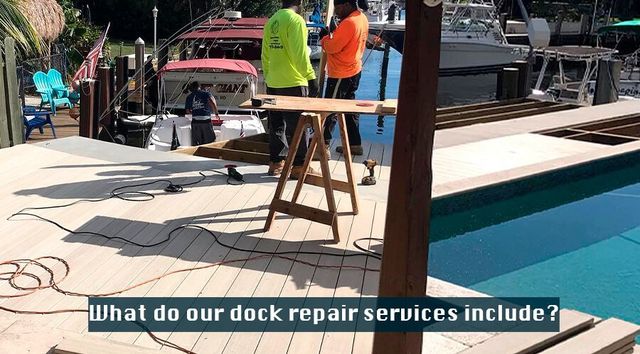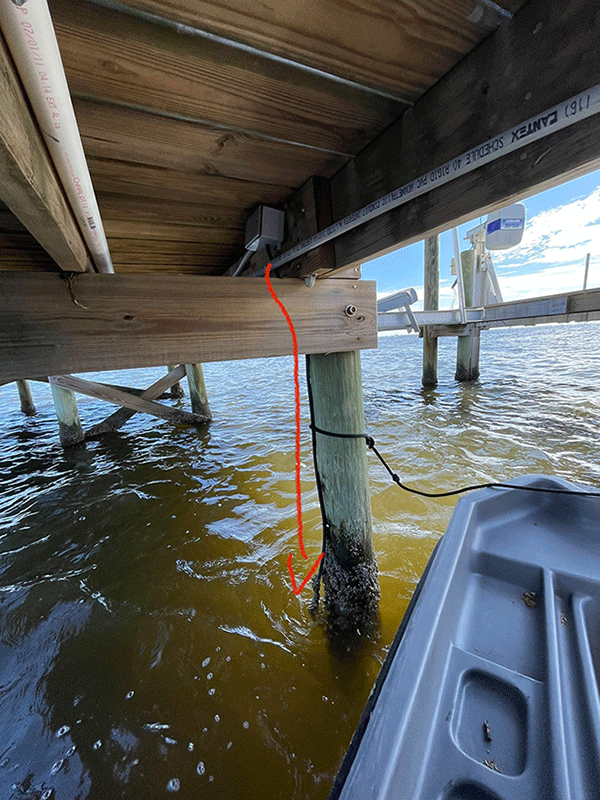Common Issues That Lead to Costly Dock Repairs
Common Issues That Lead to Costly Dock Repairs
Blog Article
Reliable Dock Repair Service Techniques: Making Certain Architectural Stability
Making sure the architectural stability of docks with efficient repair work methods is critical for the longevity and safety of aquatic centers. This includes a multi-faceted method beginning with thorough assessments utilizing advanced technologies like finder devices and remotely operated vehicles (ROVs) to find both visible and concealed problems. Consequently, selecting the right fixing materials, such as composite materials and corrosion-resistant alloys, is crucial for durability. Architectural reinforcement methods, consisting of the application of cross-bracing systems and load-distribution plates, play a vital role in mitigating stress and anxiety points. The value of these methods comes to be obvious when discovering sophisticated repair approaches and preventative maintenance methods.
Evaluating Dock Damages
Assessing dock damage is an essential first step in making certain the structural stability and safety of any kind of docking facility. This initial examination entails a thorough evaluation to determine both covert and visible damages. Secret facets to examine include the dock's foundation, pilings, decking, and hardware. Each element should be inspected for indications of wear, rot, deterioration, or other forms of degradation that could compromise the structural integrity.
Architectural designers or qualified examiners usually carry out these assessments making use of specialized tools and methods. Underwater evaluations might use finder equipment or remotely ran cars (ROVs) to spot immersed damages. Over water, visual inspections are enhanced by making use of wetness meters and various other analysis tools to reveal underlying problems not promptly visible to the naked eye.

Choosing Repair Materials
Selecting the ideal repair work products is an essential step in the dock reconstruction procedure, one that directly affects the durability and performance of the fixed structure. Product choice must be driven by variables such as ecological conditions, load-bearing needs, and compatibility with existing dock elements.
In addition to timber, composite materials are increasingly preferred because of their longevity and low upkeep demands. Composites, commonly made from a mix of plastic and wood fibers, use outstanding resistance to rot, pests, and UV damages. For metal anchors, selecting corrosion-resistant alloys such as galvanized steel or marine-grade aluminum is important to prevent corrosion and ensure architectural stability in saline water conditions.
Epoxy resins and marine-grade sealers are vital for fixing cracks and securing joints, giving a water resistant obstacle and boosting the dock's overall stamina. By thoroughly picking premium products, dock repairs can achieve lasting outcomes, therefore safeguarding against future deterioration and making certain safe, reputable usage.
Architectural Support Techniques
Efficient architectural reinforcement strategies are essential in making certain the security and durability of dock repair services. This technique is particularly effective for docks revealed to hefty tons or extreme environmental conditions.
Another vital strategy is the application of fiber-reinforced polymers (FRP) These products provide high strength-to-weight ratios and outstanding resistance to corrosion, making them optimal for strengthening wooden or concrete docks. FRP can be applied in strips or sheets and bonded with epoxy materials to improve structural honesty.
Bracing and securing systems likewise play a crucial click here to read function in structural reinforcement. Cross-bracing, using metal or wooden beam of lights, can combat lateral pressures, lowering guiding and movement. Anchoring systems, such as helical piers or driven stacks, offer a secure foundation by transferring loads to deeper, extra stable soil layers.
Last but not least, the combination of load-distribution plates can aid distribute weight more equally across the dock's surface, mitigating local tension factors. These techniques collectively make certain that anchors continue to be durable and secure, efficient in standing up to the rigors of their functional atmosphere.
Advanced Fixing Techniques

Another sophisticated method involves underwater welding, which permits fixings to be carried out without the requirement to dewater the location. This technique is specifically helpful for addressing structural problems in submerged dock components, guaranteeing minimal interruption to operations. Improved welding methods, combined with robotic systems, provide precision and reliability, therefore prolonging the life-span view of the dock.
In addition, cathodic defense systems are applied to stop deterioration in metal dock structures. By utilizing sacrificial anodes or amazed existing systems, these strategies properly reduce the electrochemical processes that bring about material wear and tear.
Last but not least, advanced tracking technologies, such as structural health tracking (SHM) systems, provide real-time information on the problem of dock frameworks. These systems enable positive upkeep and prompt interventions, eventually making certain the lasting architectural honesty of the dock.
Maintenance and Prevention
Upkeep and avoidance are essential principles that underpin the durability and security of dock frameworks. Routine inspections are vital, permitting very early detection of damage, potential weak points, and ecological impacts. An aggressive approach, including regular checks for rust, rot, and architectural shifts, minimizes costly repair services and lengthens the dock's operational life.
Safety nets ought to consist of using protective layers to metal elements to defend against rust and utilizing cured timber to resist decay. In addition, ensuring proper drain and air flow can prevent water build-up, which is a typical source of structural destruction. Incorporating quality materials and sticking to supplier guidelines during building and construction and repair phases likewise play crucial roles in enhancing toughness.

Educating workers in dock maintenance best practices guarantees consistent application of safety nets. Leveraging technical developments, such as drones for assessments and sensors for real-time surveillance, can better improve maintenance initiatives. By focusing on maintenance and avoidance, dock proprietors can guarantee structural honesty, functional safety, and cost-effective monitoring over the dock's life-span.
Final Thought
In final thought, keeping the architectural integrity of marine centers demands comprehensive dock repair work methods. Advanced repair service strategies, coupled with regular maintenance methods, make sure the dock continues to be safe and operational under diverse environmental conditions.
Making certain the architectural integrity of docks through efficient repair service strategies is extremely important for the long life and safety and security of aquatic centers.Picking the appropriate repair materials is a pivotal step in the dock restoration process, one that straight affects the long life and efficiency of the repaired structure.Effective structural support strategies are essential in making certain the stability and longevity of dock repairs. By focusing on upkeep and prevention, dock owners can ensure architectural honesty, operational safety, and cost-effective monitoring over the dock's life-span.
In final thought, preserving the structural honesty of marine facilities demands detailed dock repair work techniques.
Report this page